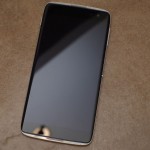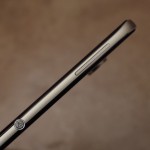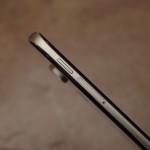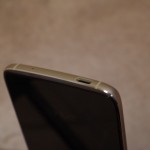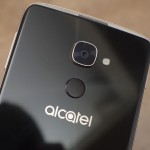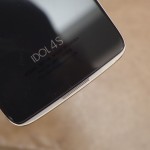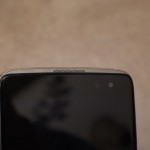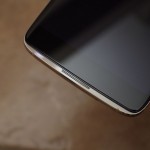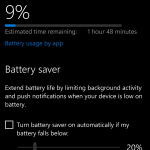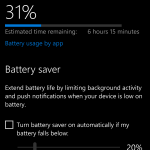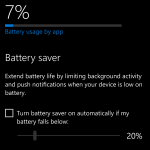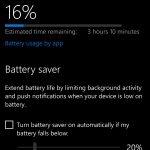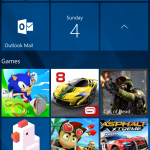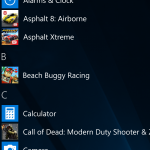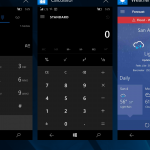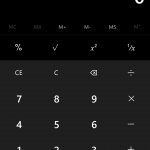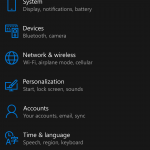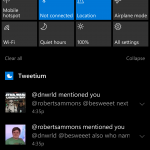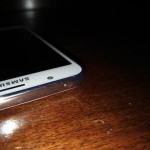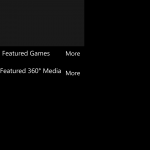What happens when you pair high-end smartphone hardware with Windows 10 Mobile? Interestingly, somewhat of a frustrating user experience.
Before I begin, let me say that I’ve been a fan of Windows on phones since its Windows Phone 7 inception. I’ve had extensive experience when it comes to even Windows 10 Mobile (though on a now low-end Lumia 640). That’s why I was excited to see that Alcatel would be releasing a Windows 10 Mobile device on high-end hardware. Unfortunately, a number of things did not live up to expectations.
Video Review
Availability and Price
The IDOL 4S (with Windows 10 Mobile) is available exclusively on T-Mobile for $469.99 in the United States. It’s unknown as to whether a global or unlocked model of the phone will ever see light, though it would be nice to see additional options given to those overseas and even in the US. Given the internal specs and quality hardware, the price is rather reasonable. You even get a nifty virtual reality headset that makes the value proposition even better. Though, similar headsets can be had for as low as $15 from many places.
Specs
While it lacks NFC, the IDOL 4S uses today’s latest and greatest smartphone hardware.
- 5.5-inch 1080×1920 AMOLED display with Dragontrail glass
- Rear-mounted fingerprint sensor
- Qualcomm Snapdragon 820 CPU + Adreno 530 GPU + 4GB RAM
- 3,000mAh non-removable battery + Quick Charge 3.0
- 64GB internal storage + 128GB via microSD
- 4G LTE (bands 2/4/12) + 3G + 2G
- 802.11 a/b/g/n/ac + Bluetooth 4.1 + no NFC
- Windows 10 Mobile (build 10.0.14393.448)
- 21MP rear-facing camera 4K30 video recording
- 8MP front-facing camera
- USB-C connectivity (USB 2.0 speeds)
- 6.06 inches tall / 2.97 inches wide / 0.28 inches thick
The Good
Unlike most of my reviews, I’ll be organizing my observations based on what’s good and what’s bad. That’s because the majority of my experience with this phone was less than stellar.
Design & Hardware
Without a doubt, the IDOL 4S looks and feels great. It utilizes black glass on both the front and the back, giving it a premium look. Sandwiched between them is a gold-colored metal frame. This helps keep the build quality absolutely solid while looking like a much more expensive device. In fact, it’s one of the best in-hand phones I’ve ever used, and that’s despite having a large, 5.5-inch display. Nothing is found below the screen, while above it houses various sensors and the 8MP front-facing camera.
Wait, what are those? Are those front-facing speakers? Why, yes, those are! A dying smartphone feature is fully found on the IDOL 4S, and it’s absolutely amazing. You can learn more about them in the audio section below.
Found on the right is the volume rocker in addition to a dedicated camera key that’s positioned in the middle. While it’s not a 2-stage camera button (half press to focus, full press to take the picture), it’s still nice to see a dedicate camera key for quick launching of the camera and for actually taking photos. The power button is positioned awkwardly on the left side, as it is aligned all the way at the top. This makes it hard to reach, though I did get used to this quickly. Below that is the combination nano-SIM and microSD card tray. Relocating to the top, you’ll find the 3.5mm headset jack and microphone, while the bottom houses a USB-C port and another microphone. Interestingly, USB headphones did not work with this port, which might actually be a limitation of the software.
Display
The 5.5-inch, 1080×1920 AMOLED display on the IDOL 4S is nothing short of nice. It checks all of the usual boxes: text is crisp, images look great, viewing angles are perfect, outdoor usability is there, and it can get very bright. Having a 1080×1920 resolution display isn’t the highest, but it’s plenty crisp, and the added power savings of the device not having to power additional pixels are always appreciated. In reality, a higher resolution — such as 1440×2560 — is completely unnecessary. One big advantage to AMOLED displays is that blacks are really black. That’s because pixels that are black aren’t powered on at all. This makes a big difference while using the device in areas of low light.
I regularly use rubber-tipped stylus pens with phones in some situations, and one odd thing I found with the IDOL 4S is that it will often act as though I’m rapidly tapping the screen, despite a simple tap and hold gesture (among others). For example, I would tap the ‘A’ key on the keyboard, but it would type several of them in a row as if it was constantly being tapped on. It’s worth noting that this doesn’t happen all the time, but is was still worth mentioning.
There’s also unfortunately no blue light filter option that’s becoming more common to find on other smartphones.
Speakers & Audio Quality
Clearly, two speakers are better than one, especially when both of them are on the front of a phone. As front-facing speakers relate to the IDOL 4S, both can get incredibly loud, and are quite clear. Though, when maxing out the volume (30 out of 30), there will be some popping / distortion. Bring volume down a tad to 25 out of 30, and things are nearly as loud without any of the popping.
They’re great not only with music, but also for movies and TV shows. Speakerphone calls also see benefits, especially if you’re using a VoIP calling service or T-Mobile’s HD Voice calling (via HSPA+ or VoLTE). It’s really hard going back to a phone with a single bottom-firing (or back-placed) speaker.
Call Quality & Cellular Performance
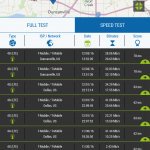 Tested with T-Mobile across central-to-far-north San Antonio, TX, everything performed well and as a high-end device should. It held onto LTE without any issues, calls connected quickly, texts sent and received without issue, and data performance was on par with local speeds. As this is a T-Mobile-sold device, it supports the full suite of network features, including HD Voice calls, VoLTE calls, and Wi-Fi Calling. All performed flawlessly. However, when activating USSD codes from the dialer will cause the phone to fall back to UMTS (3G / “4G”) or GSM (2G) instead of staying on LTE, like other devices should. This is a very small con, however. It’s also unknown as to whether the device supports 256QAM / 64QAM (downloads / uploads), 2x + 3x carrier aggregation, and 4×4 MIMO on the T-Mobile network.
Tested with T-Mobile across central-to-far-north San Antonio, TX, everything performed well and as a high-end device should. It held onto LTE without any issues, calls connected quickly, texts sent and received without issue, and data performance was on par with local speeds. As this is a T-Mobile-sold device, it supports the full suite of network features, including HD Voice calls, VoLTE calls, and Wi-Fi Calling. All performed flawlessly. However, when activating USSD codes from the dialer will cause the phone to fall back to UMTS (3G / “4G”) or GSM (2G) instead of staying on LTE, like other devices should. This is a very small con, however. It’s also unknown as to whether the device supports 256QAM / 64QAM (downloads / uploads), 2x + 3x carrier aggregation, and 4×4 MIMO on the T-Mobile network.
Battery Life
Impressive was battery life, especially standby time. My benchmark consists making it to the end of the day after being on LTE 100% of the time while occasionally checking email (Outlook Mail), Twitter (Tweetium), texts & Skype messages (Skype Preview), and viewing video (SlingPlyaer, and YouTube via Microsoft Edge). The IDOL 4S handled everything with ease and often had enough left to where I decided to do a bit of gaming, if nothing but to force the device to use more battery. In other words, getting from 6AM to the end of the day (14 – 18 hours of being unplugged) is no problem at all. Keep control over display brightness and any gaming, and it should actually be able to go well into a second day. Mind you, this is all without using any of the power saving modes that are built right into Windows 10 Mobile, and with the display brightness set to 25% most of the time.
Unfortunately, the device seems to shut itself off as soon as it hits 5%. You do get battery warnings at 20% and 15%, but nothing beyond that, which would’ve been very appreciated.
Thanks to Quick Charge 3.0 technology by Qualcomm, the IDOL 4S can regain battery life quickly. It took as little as 30 minute to add 45% to the charge( (from 16% to 61%). Going from 16% to 100% took about 80 minutes. A full charge from empty to 100% should take less than 2 hours.
Software & Features
I really do enjoy Windows on phones, and have been since day one. Many will complain about the issue of third-party apps with the platform. It honestly continues to be a problem for some, but not so much today as it once was. I’m not that heavy of an app user, and everything I’d install on other platforms (except Time Warner Cable’s app) are found here. My issues with it lie within the base OS itself, which I’ll get to in the next section.
It’s certainly a different take on a mobile OS, primarily due to its flat-colored, tile and list-based app home screen. When you pin an app to your home screen, you can adjust the size of the tile with the added option of placing them into folders. Tiles can also be “live,” in that they’ll display different information at different times while automatically updating themselves. For instance, the weather tile will display an automatically-updating weather forecast, which I’ve found to be quite handy. Alternatively, you can browse your installed apps via a vertically-scrolling list. You can also go straight to a letter, exactly like the desktop version of Windows 10. Either option allows the user to more efficiently find the app that they’re looking for.
The overall design of the OS keeps colors flat, so gradients are harder to come by (which isn’t a bad thing). Microsoft’s own apps did a great job at keeping layouts and the overall look clean and easy to use without needing any instructions. All of the stock apps — including Settings, Messaging, Phone, Microsoft Edge, Calculator, Outlook Mail, Outlook Calendar and more — are great to use.
Other features include the ability to respond to things right from their notifications, a quick toggle screen for adjusting system settings, visual voicemail, a user-browsable file system, removable bloatware, a voice assistant (Cortana), a way to use your phone as a desktop computer (Continuum), and more. There’s also a fingerprint sensor on the back that lets you more quickly unlock your device (or so it’s supposed to…). The Microsoft Edge web browser is nice and efficient, as all controls are placed at the bottom of the screen, making everything easily accessible with one hand. I also like how you can use Bing wallpapers on your lock screen, because these change daily — automatically — to match what’s on Bing.com’s home page. These beautiful wallpapers are typically high-quality nature shots, and look great on the lock screen. Using the IDOL 4S as you would an iOS or Android phone really isn’t that big of a problem (yet).
Unfortunately, the lack of NFC means you won’t be able to use your phone to pay for items using the included Wallet app. This is an odd omission, given phones that are less than half the price support NFC for mobile payments.
One thing about the OS that I simply could not stand is its keyboard. You can type quickly on it, but auto correct is borderline garbage. Not only that, but its swipe typing feature is as though it’s years behind when it comes to accuracy. The lack of tap-and-hold shortcuts (to access symbols, for example) really proves that this is not a typing experience for power users. Interestingly, you are able to slightly adjust the height of the keyboard in addition to vertically moving it to other parts of the screen.
While you can even send and receive text messages on your Windows 10 computer, you must use the Skype Preview app on both devices. This also means setting the default texting app on the mobile phone from Messaging to Skype Preview. This is a horrible experience, as Skype Preview is slow, buggy, and often unresponsive compared to the much simpler and perfectly-performing Messaging app.
Another good feature that sounds good on paper is the ability to swipe up from the bottom of the display on the IDOL 4S to hide its on-screen navigational controls. Unfortunately, some apps don’t support this feature properly — such as Spotify and SlingPlayer — so they will not dynamically adjust its contents for the change in screen space. For apps that properly support this feature, it’s convenient to have as you’re able to get just that little bit of extra usable screen real estate.
The Bad
Everything sounds great so far, right? It’s now time to detail many of the frustrating aspects of the device. Nothing below is in any particular order.
After using Windows 10 Mobile on a low-end Lumia 640 for multiple months, I was very much looking forward to using the operating system on a powerful phones. It turns out that nearly every aspect of the base OS has had its problems, and it’s rather unacceptable given the age of Windows 10 Mobile and the hardware that it’s running on.
Performance, Reliability & Bugs
Performance is nowhere near where you’d think a phone with these specs would be, and I doubt Alcatel is to blame here. Rather, the OS seems to lack optimizations to make this a zippy experience. Scrolling is, for the most part, silky smooth, but there are plenty of situations where it’s stutter city. There’s even a minor [but noticeable] delay when going from the tile home screen to the app list. Other animations are inconsistent as well, such as switching between apps using the horribly-inefficient app switcher. Speaking of the app switcher, I’ve seen several instances where the preview of the app was misplaced. For example, the preview of Tweetium actually showed the preview for Skype. Moreover, despite having 4GB of RAM, apps will regularly need to completely relaunch. You can have just 3 or 4 basic tabs in the Edge browser, switch to another basic app or two, come back to Edge, and the entire app will be reloaded. I’ve seen the dreaded “Loading…” and “Resuming…” screens far too much for any of this to be acceptable. It’s honestly not much better than the W10M experience on a low-end Lumia 640 phone.
Fortunately, frame rates in games are generally fine, but they could be smoother and more consistent. Games tested include Sonic Dash, Crossy Road, Asphalt 8, Call of Dead, Beach Buggy Racing, and Asphalt Xtreme. Compared to a Galaxy S7 with similar specs, game load times were noticeably longer in 4 of the 5 games. Below is a table comparing launch times (from tapping the app’s shortcut to getting to the main menu, or a playable state) with the IDOL 4S and a Galaxy S7 (running the Android 7 “Nougat” beta program provided by Samsung). You’ll see that the Galaxy S7 loads everything faster, except for Crossy Road. Even then, everything had noticeably smoother and more consistent frame rates than on the IDOL 4S, especially in Asphalt Xtreme, which was mostly a slideshow. I first tested a game on the IDOL 4S while using the S7 as a timer, followed by switching devices. As expected, when switching the IDOL 4S from a game to the timer stock timer app, it took multiple seconds just for that basic app to resume itself…
| IDOL 4S (W10M) | Galaxy S7 | Difference | |
|---|---|---|---|
| Sonic Dash | 33.3 seconds | 18.6 seconds | +14.7 seconds |
| Asphalt 8 | 29.4 seconds | 25.2 seconds | +4.2 seconds |
| Crossy Road | 15.7 seconds | 25.3 seconds | -9.6 seconds |
| Beach Buggy Racing | 15.5 seconds | 9.4 seconds | +6.1 seconds |
| Asphalt Xtreme | 24.6 seconds | 13.9 seconds | +10.7 seconds |
What also performed poorly was Microsoft’s own Maps application. It wasn’t only slow to pull up information, but the frame rate when panning and zooming had to have been below 20FPS. Considering Google Maps can run on Android and iOS at much smoother frame rates while displaying more information on the screen, Microsoft undeniably has work to do here.
Many third-party apps have launch issues as well. Facebook will often take more than 30 seconds to load, assuming it doesn’t crash. Instagram can take an extreme amount of time to load as well, only to perform slowly with lots of stuttering. Spotify, Runtastic, SlingPlayer, Swarm, Skype Preview, TeamViewer, TuneIn Radio, and VLC are just some others that take an abnormal amount of time to load and exhibit various bugs once opened. Should blame be placed on developers for not properly optimizing their apps, or perhaps Microsoft for not making it as easy as it should be?
Of course, you can turn the phone on by pressing the power button, but what about using the rear-facing fingerprint sensor? Ignoring the inefficient placement (it would be more practical on the front), it’s typically slow and inaccurate. It’s also difficult to find, as there are no edges around the fingerprint sensor. I actually found myself placing my finger on the camera lens instead. I tried to use the double-tap-to-wake feature, but it isn’t consistent, and the screen itself is slow to wake, sometimes taking 2-4 seconds just to wake up. Even then, the OS will sometimes delay the elements that come up on the lock screen. For example, the clock and date info would sometimes come up a second or two after the wallpaper displays. There were even a few cases where that text wouldn’t show up at all, but rather just the wallpaper. All of that behavior can also be experienced when just pressing the power button: the screen is still slow to turn on, and there may be odd, inconsistent issues with the lock screen itself. You can, however, instantly turn the screen off with a simple double-tap of the navigational bar, though. If only the display turned on in the same amount of time…
Reliability is another clear issue overall. I’ve had Microsoft Edge completely hang while loading pages, only for a restart of the app to fix it. Websites loaded relatively quickly, but could’ve been faster. Some websites also displayed Times New Roman as the main font. It would also open websites in their desktop form instead of defaulting to their mobile layouts. Aside from Edge problems, while writing this review, I had the device completely freeze and restart itself after simply taking a few photos from the lock screen followed by unlocking the phone with its fingerprint sensor.
I could continue detailing (out of frustration) the random issues I’ve experienced, but I think the point was already made ages ago.
Camera Quality
Performance of the camera undoubtedly needs improvements. It takes 2-4 seconds to launch, with a few occasions where it took 5+ seconds to launch. Photos take anywhere from 2-8 seconds, depending on whether the flash is used, if HDR is enabled, and what the lighting conditions are. This ranks camera speeds at the low end of the smartphone bucket.
Actual photo quality is usable if being used outdoors. Low-light shots aren’t nearly as strong. The lack of optical image stabilization contributes to this. The camera also has a tough time focusing and adjusting things like white balance and exposure. On every other smartphone, you tap the screen and it adjusts everything to where you tapped. Not on the IDOL 4S. Instead, it locks itself into an instant-exposure mode, where it will constantly adjust itself as you move the camera around. This makes actually tapping the screen to do the normal things nearly impossible. You can see this in the video review.
4K30FPS video quality is fine, but the phone’s electronic stabilization is not active in this resolution. It’s very noticeable when recording at 1080p30FPS, however. What isn’t fine is when you want to tap to focus and adjust the exposure properties because, like mentioned above, it goes into a mode where it’ll just constantly adjust itself depending on what you’re looking at. This is extremely odd and makes recording videos an absolute pain. I also noticed a weird issue when playing back 4K videos on the device where there will be some serious screen tearing towards the right part of the screen. There are even some horizontal colored lines being output from where the screen tearing is happening. This can also be seen in the video review. This doesn’t actually happen in the recorded video file, so the device appears to have issues with videos of this resolution. Although, in some 1080p video recordings, after the exposure and things happen to set themselves, the right half of the video will flash. This is something that is seen in the actual video file. Generally speaking, at this point in time, for recording videos, this simply isn’t a camera worth using.
It’s nice to have a dedicated key for launching the camera from anywhere, and to actually take photos. However, I would avoid using it to take the photos as it’s a bit stiff to press, resulting in unnecessary movement versus lightly tapping the virtual, on-screen shutter button.
Virtual Reality
Interestingly, the IDOL 4S comes with its own virtual reality headset. While generic versions can be purchased from retailers for as little as $15, this one is a bit more specific for the IDOL 4S in that it sits tightly into the headset. It’s easy to setup, and comfortable to wear.
- VR store is empty (1/2)
- VR store is empty (2/2)
Unlike Android and even iOS, Windows 10 Mobile has a severe lack of virtual reality apps and games. Even the included “VRStore” app is completely empty. Basically, the only ones available for the platform are the ones that are included with the IDOL 4S. These included 360-degree photo and video viewing apps as well as a few games. One of those games is a basic zombie shooting game, while another is an endless cave skydiving app. There are, fortunately, several additional games that are available for download, though they are all from the same developer. Games and apps from others simply aren’t a thing with Windows 10 Mobile, and probably won’t be.
The issue with other virtual reality headsets continues to be a problem with this one. Even though the pixel density of the screen is high enough, you can easily see them when using a headset. They’re basically magnified, so things aren’t really clear at all. To me, this made using a headset for long periods of time impractical. Interacting with your phone with the headset is also a problem, despite the headset having dedicated select and back keys (which hardly worked most of the time). I often had to take the phone out of the headset just to go back and launch a different VR app, which really killed the experience more than anything.
If a cheaper version of the IDOL 4S were available without the headset, that would be recommended, as unless you enjoy watching low-resolution 360-degree YouTube videos, it’s something worth skipping, especially if you are prone to motion sickness when using these types of products like I am.
Conclusion
I had extremely high hopes for the IDOL 4S, but was ultimately let down in multiple, big ways. The hardware itself is fantastic, as is the speaker quality. But the rest of experience is absolutely frustrating, all thanks to the slow, buggy, unreliable software and camera. Software is arguably more important than hardware, and to see it fall completely short of what it’s capable of was nothing short of disappointing. I’ve defended Microsoft in the past about Windows on phones, with many of their naysayers believing that they simple don’t care about it anymore. I’m actually starting to agree with them.
Unless Microsoft improves the performance and reliability of their own software while also encouraging third-party developers to do the same, this is one of the few smartphones I’ve ever reviewed that I simply cannot recommend to anyone.
Feel free to follow Brian and Gadget Unit on Twitter.

